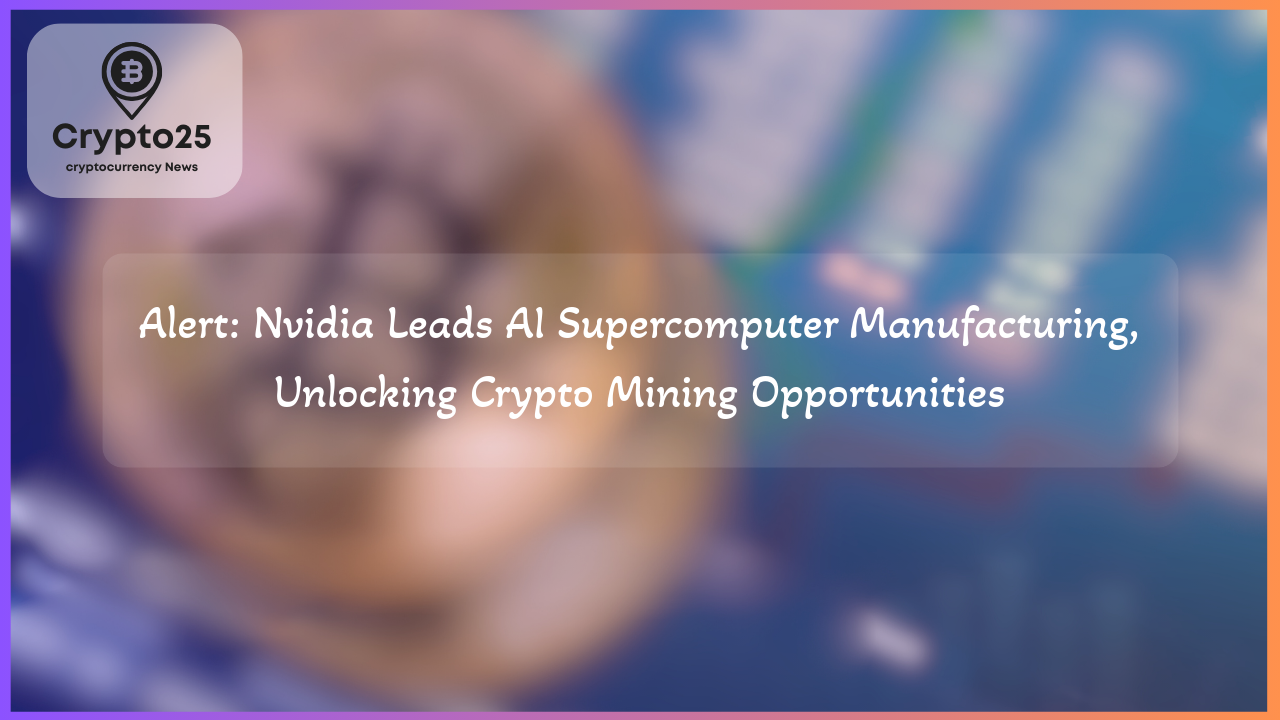
Cryptocurrency continues to transform how we interact with technology, finance, and data, creating new opportunities and challenges for the global blockchain community. This week, several developments in the crypto sector have captured worldwide attention, from Ethereum’s evolving privacy framework to Nvidia’s shift toward U.S.-based AI supercomputer production. Below, we delve into the implications of these advancements for the future of blockchain and digital finance.
—
### Can Ethereum Achieve Default Privacy?
The pursuit of privacy remains a cornerstone of blockchain innovation, especially for Ethereum. The 2022 sanctions imposed on Tornado Cash sparked intense discussions about the importance of anonymity within blockchain networks. Although these sanctions were later lifted, they shed light on Ethereum’s reliance on third-party applications for private transactions. In response, a sector of the Ethereum developer community has begun pushing for privacy to become deeply embedded within the network’s architecture.
Vitalik Buterin, Ethereum’s co-founder, outlined a concise roadmap for achieving default privacy. His suggestions center on encrypting on-chain payments and anonymizing network communications by integrating privacy features directly into Ethereum’s core protocol. Many developers agree that moving toward mandatory privacy—rather than optional tools—will ensure users’ security while preserving blockchain’s open and decentralized framework. If realized, this would mark a monumental shift for Ethereum, making privacy intrinsic to the network’s operations rather than an afterthought.
—
### Nvidia’s U.S. AI Production and Its Impact on Crypto Miners
Nvidia’s decision to produce AI supercomputers domestically has the potential to create significant ripple effects across the crypto mining ecosystem. With rising demand for AI infrastructure, miners are increasingly repurposing their facilities to accommodate the needs of artificial intelligence and high-performance computing (HPC). This pivot toward AI could enable crypto miners to diversify their operations, particularly as challenges like electricity tariffs and hardware restrictions continue to strain mining profitability.
Miners possess the infrastructure and expertise necessary for large-scale operations, making them uniquely positioned to adapt to AI computation’s growing needs. Additionally, Nvidia’s localized production could mitigate supply chain disruptions, potentially making their advanced hardware more accessible for miners evolving into AI operators. This shift signifies a transformative intersection between the worlds of cryptocurrency and artificial intelligence, positioning mining facilities as critical players in the future of tech manufacturing.
| Title | Details |
|---|---|
| Market Cap | $1.2 Trillion |
—
### Optimum Raises $11M to Revolutionize Blockchain Memory Layers
Optimum, an innovative memory layer solution for blockchain systems, recently secured $11 million in seed funding, propelling it into the spotlight as a potential game-changer for blockchain data management. Developed by technologists with strong academic roots at institutions like MIT and Harvard, Optimum aims to solve critical inefficiencies in the way blockchain data is stored and propagated. This cutting-edge solution leverages Random Linear Network Coding (RLNC), redefining how decentralized systems handle transactions by making them faster, cheaper, and more scalable.
As blockchain networks grow, scalability remains a persistent bottleneck. By introducing smarter and more efficient ways to store and retrieve information, Optimum’s technology could support the broader adoption of decentralized applications (dApps) and improve performance across ecosystems such as Ethereum and beyond. Their progress underscores the importance of academic innovation in evolving blockchain technology into a more accessible and competitive tool for global industries.
—
### Noble Accelerates Stablecoin Development with AppLayer
Noble, a blockchain focused on real-world assets and stablecoins, has announced the arrival of its groundbreaking “AppLayer” platform. Built on Celestia’s data availability blockchain, AppLayer enables developers to create sophisticated stablecoin tools designed for global financial ecosystems. By reducing costs related to data-heavy blockchain infrastructures, Noble’s new framework seeks to inspire the next wave of financial innovation while leveraging Cosmos blockchain compatibility for seamless deployment.
This development holds particular promise for stablecoins, digital currencies pegged to assets like the U.S. dollar. As demand for more efficient frameworks grows, platforms such as AppLayer could accelerate financial services, including cross-border payments, lending, and asset management. Noble’s integration with Ethereum-compatible smart contracts further reinforces its potential as a hub for real-world blockchain applications.
—
As the crypto landscape adapts to the emerging demands of scalability, privacy, and integration with next-generation technologies, it continues to reshape our understanding of value transfer and digital sovereignty. From Ethereum’s privacy efforts to Nvidia’s AI manufacturing pivot, the week’s events shed light on blockchain’s vast potential and its convergence with other technological advancements. Staying informed about these transformations is essential for anyone invested in the future of crypto, blockchain, and cutting-edge innovation.
